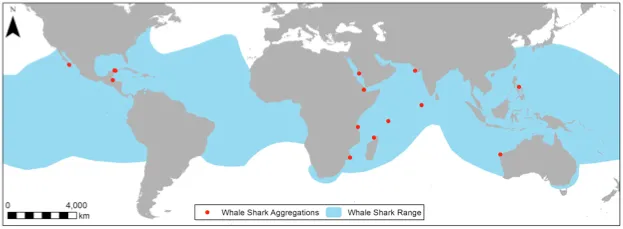Large schools of the world’s biggest fish, the whale shark, gather at around 20 hotspots worldwide, off the coasts of countries such as Australia, Belize, the Maldives and Mexico.
The reason behind the selection of these specific locations has until now been a mystery, but researchers believe that they offer an ideal combination of both deeper waters for foraging and warmer shallows for basking.
"Sharks are ectotherms, which means they depend on external sources of body heat,” says Dr Bryce Stewart, supervising author from the University of York. “Because they may dive to feed at depths of more than 1,900 metres, where the water temperature can be as cold as 4 degrees, they need somewhere close by to rest and get their body temperature back up.”

Scientists from the University of York partnered with the Maldives Whale Shark Research Programme (MWSRP), and discovered that the shark “aggregation sites” share the common features of warm, shallow water near a sharp sea-floor drop off into deep water.
These ideally contoured locations are not without their disadvantages, however, since sharks swimming in shallow waters are susceptible to boat strikes.
“Individual whale sharks can be identified by their unique pattern of spots and stripes, which allows researchers to follow specific sharks that visit these aggregation sites,” says lead author Joshua Copping. “That means we have a good idea of the rate and extent of injuries at each of these locations and sadly it’s generally quite high."
Whale sharks are targeted by hunters for their fins and meat, and can be accidentally trapped in fishing nets cast for other species.
The researchers hope their study will highlight the importance of managing these areas in order to minimise human impact and protect these gentle giants.
Main image: The whale shark is the largest living fish in the world. © MWSRP